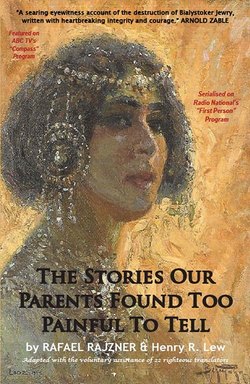Читать книгу The Stories Our Parents Found Too Painful To Tell - Henry R Lew - Страница 7
На сайте Литреса книга снята с продажи.
FOREWORD TO THE ENGLISH EDITION BY HENRY R. LEW.
1. PROEM.
ОглавлениеRafael Rajzner’s personal memoir “The Annihilation of Bialystoker Jewry” occupies a unique place in Holocaust history. It is one of a dearth of personal Holocaust memoirs which were written and published immediately after the war. This was at a time when survivor-victims still suffered the severe mental anguish of post-traumatic stress syndrome when reminiscing their terrible ordeals. Sufficient time for a degree of healing to occur had not yet passed. These people were also troubled by other pressing demands. They had new families and they often had to learn new languages, in strange foreign countries, in order to work and support their families. They had to think to their children’s futures and try, as best as possible, to put their own past to a side. They couldn’t even tell their children exactly what had happened. It was too painful to do so. These were the stories our parents found too painful to tell!
The reason that Rajzner’s book, unlike others, was largely forgotten, probably relates to his premature death, aged 56 years, in 1953. This was well before the capture of Adolf Eichmann, one of the major architects of Nazi Jewish genocide, in Buenos Aires on May 11th 1960 and the commencement of his subsequent trial in Jerusalem on April 11th 1961. These events generated such enormous worldwide publicity, as a result of the “new television age,” that horrors of the Holocaust were now presented to vast audiences in ways never seen or heard of before. More victims were encouraged to tell their stories, but it often took decades for them to eventually face their ghosts and do so. Rajzner was simply not available to retell his.
Two of the earliest writers of personal Holocaust memoirs remain the two best known. These are Primo Levi and the Nobel Laureate Elie Wiesel. Levi’s first book, “Se questo e un uomo,” was published in Italian in a print run of 2000 copies on October 11th 1947. Levi’s publisher was an amateur, Franco Antonelli, who undertook to publish the book because of anti-fascist sympathies. It is in all probability in the first score of Holocaust memoirs published after the war.
Wiesel’s first book, “Un di velt hot geshvign,” was published in Yiddish by the “Central Union of Polish Jews in Argentina” in 1956. Wiesel admits it took him ten years to recover sufficiently to write it. Levi’s first book did not become well known until after it was published in English as
“If This Is a Man” in 1958. It was renamed “Survival in Auschwitz” in the United States. Levi’s next book of memoirs
“The Truce” in English, renamed “The Reawakening” in the United States, was only published in 1963, well after the Eichmann case. Wiesel’s first book likewise only became well known after it was first published in three volumes in English, and again, in its entirety, only after the Eichmann case. “Night” first appeared in 1958, before Eichmann’s capture, but “Dawn” 1961 and “Day,” previously “The Accident,” 1962 were published after it. Rafael Rajzner’s memoir was first published in Yiddish by “The Bialystoker Centre” of Melbourne, in Australia, in 1948. Like Levi’s “Se questo e un uomo” it is probably in the first score of Holocaust memoirs published after the war and portrays events still fresh in the author’s mind. To be able to read it in English for the first time should therefore be a rare experience.
